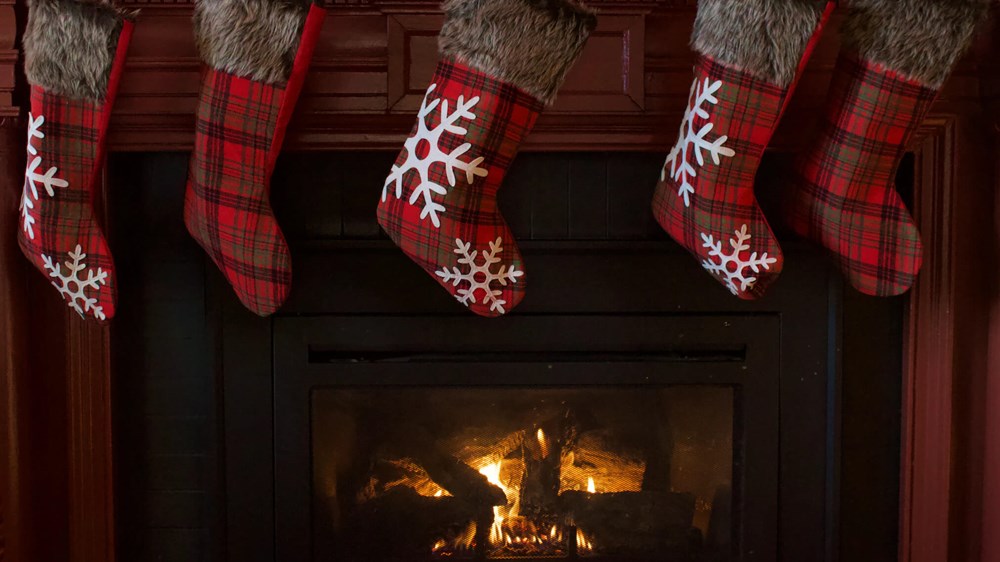With so many presents to buy, parties to attend, and food to prepare, it can be all too easy to forget that Christmas doesn’t just impact your wallet. Whether it’s all that shiny wrapping paper and plastic packaging going in the bin, wasted food, or unwanted presents, it has a big impact on the environment, too.
According to recent statistics [1], it is estimated that, each Christmas, people in the UK:
- Use 227,000 miles of wrapping paper each year.
- Send roughly 114,000 tonnes of plastic packaging to landfills instead of being recycled.
- Throw away three-and-a-half black bags full of Christmas packaging per household.
- Waste two million turkeys; five million Christmas puddings; 17 million Brussels sprouts; and 74 million mince pies!
And, with all that in mind, you might well be thinking to yourself: “going forward, how can I reduce my environmental impact and enjoy a more eco-friendly Christmas next year — and in the years to come?”
Thankfully, we’ve compiled some of the best ways for you to do so, starting with:
Decorations
This might not seem like an immediately obvious one but making the most out of your existing decorations is a great way to enjoy some simple (and quick) Christmas wins!
Whether that’s making your own decorations to crafting reusable Christmas crackers, avoiding single-use tablecloths and napkins, reusing a plastic tree for at least 10 years, or using LED lights throughout the house (and remembering to switch them all off at night); there are a number of changes you can take on board that could really make a difference.
Food and Drink
Even though eating and drinking is the highlight of the Christmas period for many, we’re sure you’ll agree that the above wastage statistics leave a somewhat sour taste in the mouth.
Thankfully, there are a few simple solutions to combatting food and drink waste, including: checking your cupboards before a shop to see exactly what you need; dropping off any excess ingredients, food or drink at your neighbours’ houses or a food bank; and – perhaps our favourite one of them all – using leftovers to cook new recipes (Boxing Day bubble and squeak or turkey curry, anyone?).
Presents
In a study conducted by Opinium Research on behalf of Wealthify in 2021, it was discovered that an estimated £733 million is spent on unwanted Christmas gifts for children each year (and, according to our updated research for 2022, it's expected that a whopping £86 million extra will be spent on them this year).
When it comes to choosing more eco-friendly ideas that won’t go to waste (especially if you’ve left buying until the last minute again), further research [2] found that some of the most popular alternatives to giving traditional Christmas presents this year are:
- Cooking a nice meal – 32%
- Making a charity donation – 12%
- Volunteering – 9%
- Doing just stockings – 9%
- Giving ‘experiences’ – 4%
If you really do want to give a physical present, however, asking what people actually want in the first place – or even buying second-hand – is a great first step in reducing the number of unwanted gifts and subsequent wastage.
Give the gift of money
It’s the number one question that most parents dread getting from their family members and friends every year: “What should I get your little one for Christmas?”
If you’re trying to be more eco-friendly, you’ll probably want to avoid buying a toy they’ll get bored of or lose or break after a few months; and one that inevitably takes up storage space or, worse still, gets thrown away.
There is another option, however: you could ask them to put the money in a Junior ISA (also known as a ‘JISA’) for them instead (if you wanted to, of course).
So, how does this work?
ISAs (Individual Savings Accounts) are little gifts from the UK government that allow you to save or invest up to a certain amount tax-efficiently each year (for a Junior ISA, this is £9,000 for 2022/23). So, a Junior ISA is a savings or investment account that enables you to take advantage of this allowance while saving for your child’s future.
There are two types of Junior ISAs that a parent or guardian can open for their child. These are a Junior Cash ISA (where their savings will gain interest), or a Junior Stocks and Shares ISA (where the money is invested instead).
You can spread the £9,000 annual allowance across both types, or use it in just one type of Junior ISA if you wish.
The money in this account belongs to your child, not you, and can only be accessed by them when they’re 18. And if you choose a Junior Stocks and Shares ISA, their savings could grow further because they will be invested in the stock market. However, please remember that with all investing your capital is at risk, and your child could get back less than what was invested by yourself or any other contributors to the Junior ISA.
Although a JISA will be set up by a child’s parent or guardian, with ones offered by some providers (like Wealthify), other people can pay in, too. And, by asking your friends and family to put money into this account rather than giving your little one cash or buying them plastic toys an extra stocking filler next year, you won’t just be reducing your environmental impact; you could also be giving them a gift that makes a big difference to their future (especially if you and your loved ones pay into it each festive season).
Want to give your little one a financial head start in future while reducing your impact on the planet? Why not find out more about our Junior ISA and how it works?
The tax treatment depends on your individual circumstances and may be subject to change in the future.
Please remember the value of your investments can go down as well as up, and you could get back less than invested.
References
1.) https://www.gwp.co.uk/guides/christmas-packaging-facts/
2.) Wealthify research conducted amongst 1,000 UK parents of under 18-year-olds on behalf of Wealthify by Opinium Research from 15-23rd November 2022.



